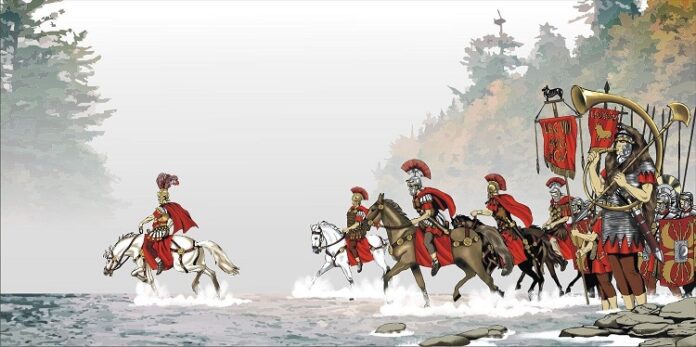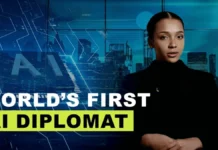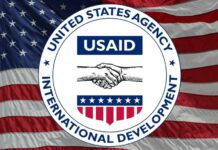The COVID-19 pandemic has thrown countries into confusion, devastated economies and caused major disruption to almost every aspect of our lives. The world of diplomacy has not been spared the chaos. Politicians, ambassadors and officials have scrambled to adapt to changing circumstances and learn the tricks and techniques of virtual diplomacy. So how do you negotiate, persuade and influence in a virtual world? ICRC Diplomatic Advisers Nicholas Hawton and Shahrokh Shakerian look at the lessons learned so far and make recommendations for the future. Audio Player
It was never meant to be like this. The premier international diplomacy event of the year – the United Nations General Assembly –populated by socially-distanced, masked ambassadors sitting amidst vast empty spaces in the cavernous UN assembly hall in New York. The world is changing, and no one knows to what extent and for how long. The chances are that even if a vaccine is found and the pandemic brought firmly under control, we will not circle back fully to the pre-COVID world. Fear of a new future pandemic will linger, business models will have changed, cost advantages of home-working will have been absorbed, and technologies will have advanced. If the Rubicon has not been completely crossed, we’re certainly halfway to a new yonder.
In places already grappling with conflict and violence, the virus has added a new layer of challenge. There is a need to influence and persuade States, authorities, armed groups, institutions and others, if humanitarian support is to prioritize the most vulnerable people. Humanitarian diplomacy is key, and – in the virtual world, where time zones are crossed at the touch of a button – it’s becoming a 24/7 occupation. Video conferencing and digital diplomacy are nothing new, but the scale of virtual diplomacy today is unprecedented. This presents challenges, but it also presents opportunities.
So, months into the pandemic, what lessons have been learned and how do we collectively move forward to seize these opportunities?
From threat to trust
At the onset, it’s worth noting that the principles of diplomacy remain unchanged. Diplomacy remains the art of managing external relations of a State or organization in order to achieve policy objectives peacefully. At the heart of diplomacy are the skills of negotiating and influencing. These in turn require parties to be clear, credible and predictable, facets that become more important in times of increasing complexity in the international arena. But in the world of virtual diplomacy, these traits face at least three major challenges.
Empathy deficit
As we all know, communicating with a screen is different from communicating with real-life human beings. Reactions, gestures, tone, and even silence leave impressions. The chemistry, the body language, the eye contact, and the spontaneity don’t fully translate to the virtual world. There is greater difficulty in creating a ‘relationship’. As the former Canadian PM, Brian Mulroney, put it: ‘Anyone who tells you that personal relationships don’t matter in foreign affairs doesn’t have a clue’.
In simple, bilateral meetings, especially with known interlocutors, virtual connection is not such a problem. Even in large, multilateral meetings where the task is to read out a scripted statement, the dangers are limited. But in the process of conflict resolution or more complex multilateral negotiations, challenges emerge. There is far more difficulty in creating connections, establishing relationships and feeling empathy – and, therefore, greater difficulty in achieving diplomatic goals.
Space change
The typical forum for diplomacy, and with good reason, is in person. But the rules and practicalities are changing. Now we’re often communicating directly from a home environment or a personal office. Some of us use fake backgrounds, and the real ones are laced with all the inherent dangers: crying babies, boiling kettles, and the drills of workmen.
With space becoming more subjective, and more individualized, two issues arise. First, the ‘coffee corridor connection’ is lost. The discussions and connections made in the informal spaces around traditional diplomatic locations simply cannot be replicated. Secondly, the protocol systems of precedence and physical engagement could lead to a narrowing of the diplomatic space. With fewer people ‘in the room’ the power dynamics can shift, and this can have implications for how organizations are able to influence decisions for the benefit of those most in need.
Security threat
In a fast-moving world of technological development and cyber attacks, there will be threats of hacking and access to material that is not supposed to be accessed. Who actually controls the backdoors to the platforms and what are the legal safeguards? The speed with which new platforms are being developed poses another challenge. Are negotiators happy in negotiating on virtual platforms which have been designed by companies from countries which may be sitting on the other side of the (virtual) negotiating table? Perhaps not. In the virtual world, while more meetings are possible, there remain important questions about the quality of the meetings and, crucially, the security of them.
These three issues are by no means the only challenges the diplomat faces in the virtual world. But they all point to a common threat that is a central requirement for diplomacy: trust. Trust is built in different ways in different cultures. In some cultures, great emphasis is put on the personal connection, the physical personal contact. The rise of virtual diplomacy will inevitably raise the question: How can we establish and build trust in this new, remote world? Despite the challenges described above, we believe there are ways to mitigate them and even explore advantages and seize opportunities that virtual diplomacy offers. I
The art of listening
The negotiator, diplomat, influencer or humanitarian actor need certain skills and an understanding of how to adapt to the changing environment.
Technologies. Any channel of technology must be understood before being utilized. Any mistakes made in the use of the platform could be costly in terms of negotiations, trust, or the ability to influence. It’s also important to seize the opportunities provided using multiple technologies. You may be in a high-level meeting with A, B, and C, but can also talk to D at the same time, who is out of sight and able to provide supporting advice and information. Using the camera is also important, as it fosters a connection and builds trust.
Emotional intelligence transferred. The simple art of listening and observing becomes ever more important in the virtual diplomatic world. The change in tone, the language used, the length of the pause, the passing facial expression, the body movement, the clothes worn, the background chosen: all of these helps establish the ‘point of view’ of the other – an absolute necessity in the practice of negotiating and influencing. Reading the room was always important; now it is a matter of reading the screen.
Build the trust elsewhere. It’s important not to only focus on the virtual meeting, negotiation or discussion in question. Conversations can take place before, and after, the meeting in more informal, one-to-one exchanges that build trust in a different way. A separate telephone call can help construct an understanding of respective personalities and positions, which will make for more effective diplomatic engagement.
Clarity of purpose. The importance and type of meeting that is being organized should be established at the outset. If the purpose is to deliver a scripted speech, then virtual means are probably adequate. If these are sensitive negotiations on the release of hundreds of prisoners or attempts to resolve a conflict, think twice about any virtual discussion. If the meeting is bilateral then, again, there are fewer concerns. But if the meetings are multilateral and complex, greater care is needed.
Evolution or revolution?
The big question is whether we are dealing with ‘evolution’ or ‘revolution’. Is this diplomacy a new, revolutionary experience that requires new techniques and methods, or are we simply trying to replicate traditional diplomacy in an unfamiliar, virtual space? Whatever the case, we need to be able to adapt how we work so that we are not left behind.
In the current world of increasing tensions and where the stakes seem increasingly high, applying tried and tested diplomatic skills while also using technology that is available to engage with people virtually is key. Since the outbreak of the pandemic, we have acquired significant knowledge and expertise in virtual diplomacy. Let us put it to good use.
What is clear from the perspective of the ICRC is that physical proximity to populations in need is essential, and whilst virtual diplomacy can and will play an increasing role, the presence of ICRC delegates in the field, living, understanding and supporting the struggles of others will remain – using a principled humanitarian approach – the absolute raison d’être of the organization.
Meanwhile, in this world of virtual diplomacy, we’re all learning together. The Rubicon is already being crossed.
Nicholas Hawton & Shahrokh Shakerian













